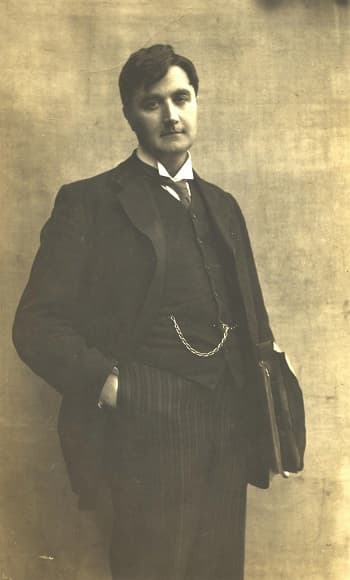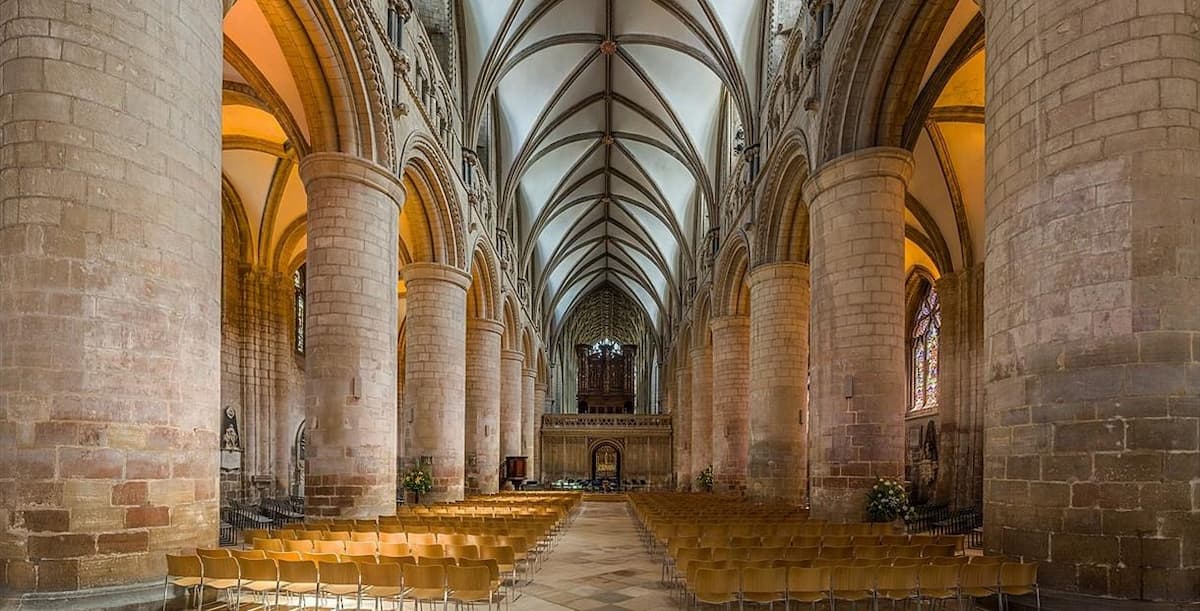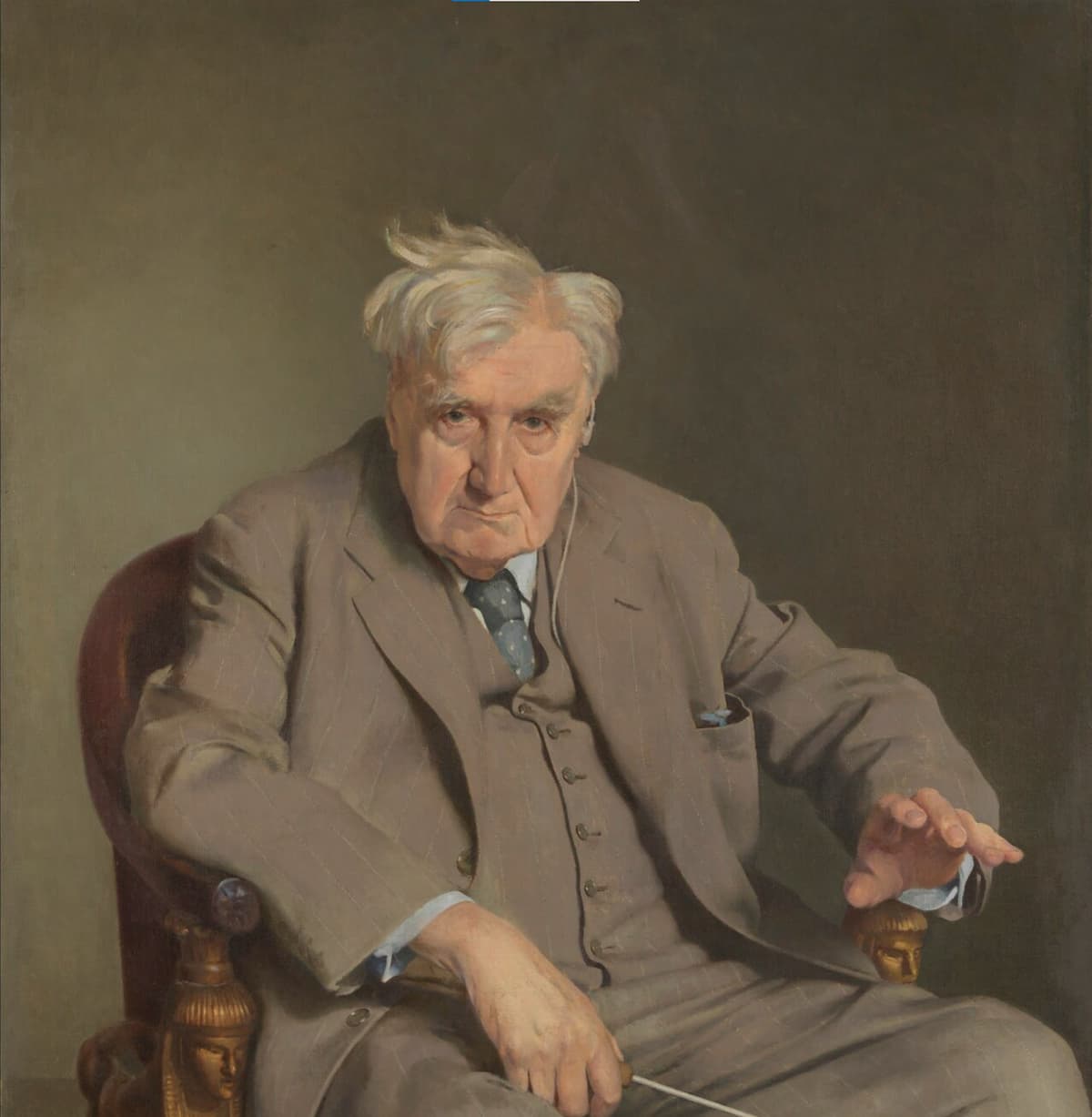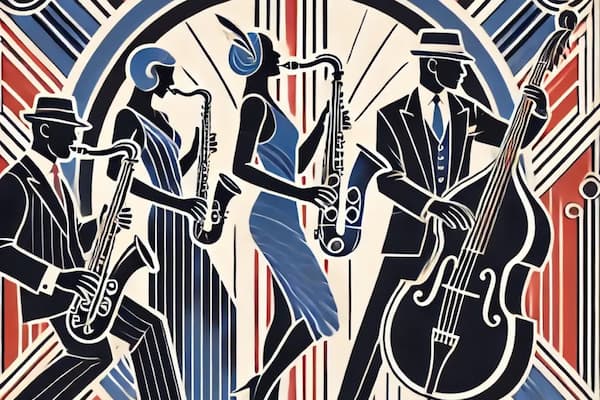Ralph Vaughan Williams’ 1910 Fantasia on a Theme by Thomas Tallis was his consummate mix of all that interested him: folksong and the glories of English music from earlier centuries and their modal scales.

Ralph Vaughan Williams, 1910
His form was the 17th century fantasia and the melody he chose to use was one written by Tallis in 1567, ‘Why fumeth in fight’. Vaughan Williams had first encountered the melody while editing The English Hymnal in 1906.
The work was created for the Gloucester Three Choirs Festival and he used the architecture of the Gloucester Cathedral to great effect. The work is for all strings: one string quartet and two string orchestras, the second placed apart from the first so that they can exchange melodies and material antiphonally.

Gloucester Cathedral exterior

Gloucester Cathedral nave
The work opens with five hushed chords. As the work builds, both of the string orchestras enter with the tune, harmonized not in four parts as in the Tallis original, but now harmonized into 9 parts. A solo viola emerges with a new melody, although clearly based on the Tallis original. Later in the work, Tallis’ melody returns in a conversation between violin and viola, while below them are tremolo strings. The work closes on a widely spaced fortissimo chord that then hangs, echoing in the Cathedral before fading into silence.
Ralph Vaughan Williams: Fantasia on a Theme by Thomas Tallis (Sinfonia of London; John Wilson, cond.)
One can imagine the first audience for this work being left in silence themselves.
For the composers in the audience, this performance marked the arrival of a new musical generation. It was breaking away from the Romantic tradition of Elgar and forging new paths in music while also using the music from the past as its base. You might almost think of it as England’s trial with neo-classicism: the sound of today blended with the techniques and modal melodies of England’s past.
The fantasia form engaged Vaughan Williams for decades, beginning with his 1896 Fantasia for piano and orchestra, the Tallis Fantasia in 1910, a Fantasia on Christmas Carols (1912) The Fantasia on Sussex Folk Tunes (1929), and a Fantasia (quasi variazione) on the 0ld 104th Psalm Tune of 1949. In addition, a Fantasia on ‘Greensleeves’ (1934) was made by Ralph Greaves based on Vaughan Williams’ opera Sir John in Love.

Gerald Kelly: Ralph Vaughan Williams, 1961 (London: National Portrait Gallery)
The term ‘fantasia’ was first applied to music in the 16th century and meant a piece with an imaginative musical ‘idea’. It first appeared in Germany keyboard works before 1520; the title had spread to Spain, Italy, German, and France by the 1530s. For those later composers, ‘fantasia’ was not tied to any particular form, but mean something like ‘the play of imaginative invention’. It was further developed in the Netherlands as the chromatic fantasia. As we move into the Baroque period, both keyboard, viol, and woodwind fantasias come to the fore, so we have J.S. Bach’s Chromatic Fantasia and Fugue for harpsichord, Telemann’s Twelve Fantasias for Solo Flute, and similar works for solo violin or viola da gamba by the mid-18th century.
A Fantasia was license for compositional experimentation without being bound necessarily by a form. In the 20th century, it was largely English composers, including William Hurlstone, Armstrong Gibbs, John Ireland, Herbert Howells and Frank Bridge, as well as Vaughan Williams and Benjamin Britten, who found inspiration in the Fantasia idea.
For more of the best in classical music, sign up to our E-Newsletter



